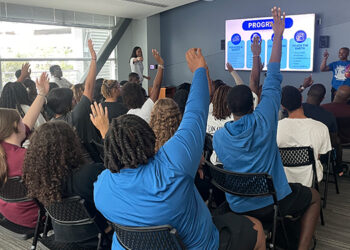Indoor equipment rentals are no problem for campus recreation. It’s usually as simple as checking out a basketball for a couple of hours, then having it brought right back to the front desk. Outdoor equipment rental, on the other hand, is a different animal.
You’re talking about equipment that is leaving your facility for days at a time. There are greater inherent risks with the equipment being damaged or not returned at all. Because there’s so much risk involved, it’s important your recreation department is trained in proper outdoor equipment rental protocols.
Campus Rec spoke with Bryan Karban, the outdoor program manager at the University of Minnesota, about the best practices for effective outdoor equipment rental.
CR: What are the biggest challenges involved in equipment rental?
BK: I would say the biggest challenges involved are managing the inventory. We have 60-plus pairs of snowshoes in our programs. They all have four straps, there’s a left and a right — so keeping things straight is tough. If things break, we have to get them repaired. Just the logistics of managing a lot of equipment and inventory is a challenge.
CR: What’s the best way to ensure equipment gets returned on time and in good condition?
BK: You have to have a variety of policies in place and a system of accountability. You have to have a really good way of tracking, knowing who has each piece of equipment, when it’s due, and if things aren’t back, making sure people are following up with those individuals to return the equipment. You should also implement a policy that the people renting are responsible for any lost or damaged equipment.
CR: How can you best organize your equipment? Is there a specific number of certain pieces you should have on hand?
BK: That’s really dependent on what type of equipment you have. Serialization is important — for example, if you have 60 snowshoes and you rent out Pair 1 to this person, you can track who has which particular pair of snowshoes. At the University of Minnesota, we have 50,000 undergrads, and our rental program is open to the general public as well as students. It’s really going to depend on how many customers you have.
We tend to, every year, add equipment until we hit that point where we’re renting out everything on occasion. But most of the time, we do have some inventory not in use. It tends to fluctuate based on the market and the demand. And winter sports can be tough — we have a lot of cross-country skiing, but the past couple of years we’ve barely got any snow. So we’ve had years where we’ve rented out all of our cross-country skis and this winter, we’re renting barely any because people aren’t able to get out skiing. A lot of this depends on the program’s philosophy and business model. In our programs, we use our gear to equip students we take out on trips and still rent to the general public as a way to generate some additional revenue. If programs are primarily focused on equipping their trip program, [the necessary equipment] can be a much lower number. But if you’re looking to have that revenue generation, you’re going to need more equipment.
CR: Any tips for other campus rec departments?
BK: The two keys to equipment rental are organization and good staff training.










